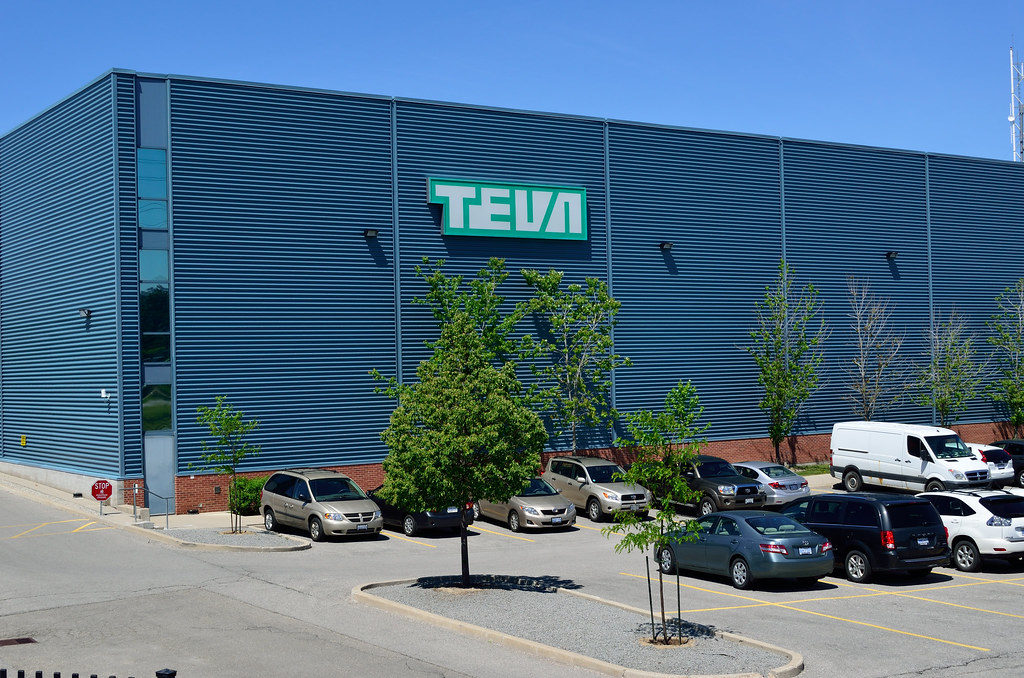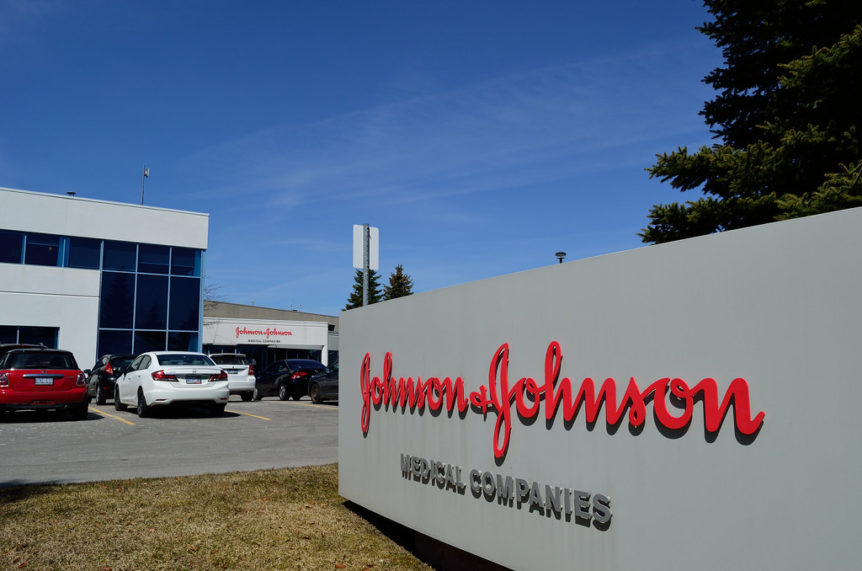An estimated 130 people in the US die every day from opioid overdoses. In 2017 alone, it was responsible for more than 70,000 deaths. The abuse and misuse of opioids – including heroin, prescription pain medication, and synthetic ones like fentanyl have become a national crisis that needs to be nipped in the bud.
The first step to doing this is to hold the pharmaceutical giants that manufacture and market these drugs, accountable for the role they play in promoting the epidemic.
The genesis of the crisis can be traced back to the late 1990s when these companies assured medical practitioners that patients would not become addicted to prescription pain relievers made from opioids.
As a result, the number of medical care providers prescribing them to their patients began to soar. The result? The widespread abuse of and addiction to these products emerged and thousands of Americans began to die from opioid overdoses.
The landmark ruling in the Johnson and Johnson lawsuit marked a giant step in putting pharmaceutical companies in check to fight the war against addiction to prescription opioids. This article delves deep into the famous Oklahoma opioid lawsuit and what it means for pharmaceutical companies going forward.
Oklahoma vs. Johnson and Johnson
Can a state make a major pharmaceutical pay for the pain and devastation its products cause to the general public? That is the question that was on everyone’s minds when the Oklahoma State decided to go head to head with Big Pharma in the historical opioid trial.

The state’s Attorney General Mike Hunter accused giant drug makers like Johnson and Johnson, Purdue Pharma, and Teva pharmaceuticals of perpetuating a deceitful and cynical brainwashing campaign worth millions of dollars promoting opioid analgesics as some sort of magical wonder drug.
He presented a mountain of irrefutable evidence to demonstrate the role they play in the opioid crisis that is devastating the state. He revealed that over 4,000 people died of overdoses involving prescription opioids in the past decade.
A majority of these deaths were the result of unintentional overdosing. He went further to show that more than 28,000 people had been admitted for heroin and prescription opioid treatment in state-run drug facilities.
Oklahoma ranks seventh in the nation for opioid prescription drug abuse among children aged between 12 and 17 years old. Moreover, hundreds of babies are diagnosed with opioid-induced neonatal abstinence syndrome each year. Neonatal abstinence syndrome (NAS) is a medical term that refers to a cumulative group of health issues that develop in newborns who were exposed to addictive substances while in their mother’s womb.
According to the AG, Big Pharma, in its quest to satiate its greed ignored volumes of well-documented historical research that established a clear association between opiates and fatal addiction epidemics.
The state attorney and his team decided to focus their attention on drug “kingpin” Johnson and Johnson stating that the company is responsible for the public nuisance it has created which in turn continues to cost the state billions of dollars in trying to “clean up” its mess and destroying thousands of lives in the process.
Johnson and Johnson Defense
Larry Ottaway, the defense lawyer representing Johnson and Johnson, rubbished the state’s allegations stating that opioids are generally rarely addictive. They cited the Food and Drug Administration’s (FDA) stance, which was that the drugs, when used as they should, rarely cause addiction.
The defense team went on to show that the state’s allegations that the pharmaceutical company markets opioids to children, were utterly false. The went on to prove this by playing a video commercial that appeared to encourage children to stay away from consuming the prescription drugs of others.
He further justified that Johnson and Johnson were doing a public service by helping millions of Americans who suffer from chronic pain, which according to statistics from the CDC, accounts for 20% of deaths each year.
He argued that chronic pain leads to depression, which ultimately causes death. He faulted the state for failing in its oversight responsibility to monitor and rectify illegal prescribers of opioid medication stating that shutting down legitimate access to treatment was not a fair alternative to those who need the drugs.
He challenged the state team to prove that the company’s marketing campaigns were misleading and that patients who took the drug as prescribed ended up dead or addicted.
He referred to accusations made by the state against the company as “baseless and unsubstantiated”, adding that all their prescription medication provided clear information about the risks associated with taking them as well as the benefits patients reap when they take them correctly.
The Effects of the Oklahoma Opioid Crisis
State attorneys told the court that the opioid crisis in the state of Oklahoma has had far-reaching and adverse implications on the community at large. The prescription opioid analgesics manufactured by Big Pharma have caused marriages and families to tear apart, and have cost the country more than $500 billion to deal with the addiction epidemic that is sweeping the nation. They reiterated that the Johnson and Johnson products had been marketed to target anyone and everyone.
To drive the point home, research conducted in Cleveland County, Oklahoma, by the state team, revealed that more than 149,000 sales visits had been made to doctors between 1999 and 2005, and a staggering 135 opioid pills were available to virtually every adult in the country.
They argued that Johnson and Johnson competed with other opioid manufacturers like Purdue Pharma to find new ways of getting patients hooked on their drugs so that they would continue taking them.
Purdue Settlement
Before the Johnson and Johnson suit was filed in 2017, the Oklahoma attorney general had bagged two major settlements from other large opioid manufacturers. The first of these was a $270 million settlement from Purdue Pharma, the company famous for OxyContin. Hunter accused the pharmaceutical of aggressively marketing the opioid, which in turn fueled the addiction epidemic that is currently plaguing the state.
$102.5 million of the settlement would go towards establishing a National Addiction Treatment and Research facility at Oklahoma State University. The company would also be required to contribute an additional $15 million in payments each year for five years beginning in 2020 in continued support of the program.
Part of the settlement also required them to provide $20 million to cater for opioid rescue medications and addiction treatment at the facility over the five years.
$12.5 million would go directly towards helping counties and cities battling the opioid crisis. Away from the company, the Sackler family, the founders of Purdue Pharma, were compelled to contribute a total of $75 million spread over five years to go towards the treatment and research center.
The settlement came after the Purdue defense team sought to have the trial delayed for 100 days. The Oklahoma Supreme Court rejected their appeal. So far, the giant pharmaceutical company is battling lawsuits that have been filed by 36 other states, with Oklahoma being the first to set a precedent.
Purdue settled the suit without admitting to any wrongdoing. According to Hunter, the company deceived the public into believing that their opioid analgesics were safe for prolonged use.
Teva Opioid Settlement
In a revised settlement between the State of Oklahoma and Teva Pharmaceuticals, the company was ordered to pay $85 million that would be channeled towards curbing the opioid addiction epidemic running rampant in the state.

The company was required to pay the amount within three days to the law firm that has been working on the case on behalf of the state. The money is to be wired to the state treasury’s Opioid Lawsuit Settlement Fund once the private law firm that was representing the state withdrew its legal fees.
The state proposed a 30-year opioid epidemic eradication plan that is estimated to cost $17.5 billion. The money from the settlement was to be channeled towards that. Part of the Teva opioid settlement included a clause prohibiting the company from employing or contracting sales representatives to promote their opioid products in the state.
The company also agreed to refrain from using lectures and well-known opinion leaders from promoting opioids. The company is also required to cooperate with law enforcement investigations involving the use of opioids in Oklahoma. The spirit of the agreement was to help protect the general public and doctors from being misled by deceptive marketing materials that downplay the addiction factor of opioid medication.
Johnson and Johnson Settlement
According to the judge presiding over the case, the ruling stated that Johnson and Johnson had intentionally overplayed the benefits of their so-called opioid wonder-drug while downplaying its addictive properties and dangers associated with it. The company was ordered to pay $465 million, which fell short of the $17 billion the state had initially sought.
According to the AG, the amount was to pay for drug courts, addiction treatment, and other drug eradication-related services it would need to offer over the next 20 years to reverse the devastation caused by the opioid crisis. In his ruling, the judge found that the pharmaceutical was in breach of the “public nuisance” law.
He further noted that the company had built a reputation spanning decades as a family-friendly and trustworthy manufacturer of baby products, soap, and Band-Aids. It was therefore unacceptable that the company would ride on that sterling reputation to promulgate false, dangerous and misleading marketing campaigns promoting their opioids.
As a result, they had a big part to play in the ever-rising rates of addiction, overdoses, and deaths related to opiate-based prescription analgesics. Additionally, the number of babies born with neonatal abstinence syndrome as a result of opioid exposure while in the womb needed to be dealt with, with the seriousness it deserves.
While the AG would have liked to walk out with the $17 billion settlement the state sought, the judge advised that the $465 million would suffice to pay for a years’ worth of the services required to combat the addiction epidemic plaguing the state.
The Drug “Kingpin”
The Johnson and Johnson legal team stated that they had several grounds on which to appeal and would pursue those avenues vigorously. Johnson and Johnson were labeled the drug “kingpin”, given the fact that they had the financial muscle to directly contract poppy growers in Tasmania to grow the ingredients.
Because of this, the company was responsible for supplying a whopping 60% of the opiate ingredients required to manufacture drugs like oxycodone.
Additionally, the subsidiary company, Janssen Pharmaceuticals, also manufactures its opioids by creating synthetic variants of the poppy-derived ingredients. It also produces a fentanyl patch that is also synthetic and similar to morphine but is up to 50 times more potent. It has now become one of the most common prescription drugs responsible for overdose deaths in the US.
As a result of the precedent set by this landmark ruling, there are currently more than 2000 similar lawsuits that have been filed around the country targeting opioid manufacturers, retailers, and distributors.
In light of the historic ruling, the vice president of Johnson and Johnson Michael Ullmann came out strongly to condemn it, stating that both the company and its subsidiary were not responsible for causing the opioid crisis in Oklahoma, citing that it was “a very complex health issue”.
Between the years 2015 and 2018, Oklahoma had 18 million prescriptions written in a state that only has 3.9 million people. Those numbers certainly point to an addiction crisis. The state estimates that it would need approximately $893 million each year to be able to remediate the adverse effects opioid addiction has brought to the state.
The Battle Is Far from Over
If the Johnson and Johnson company does proceed with its appeal, state appeal judges (and possibly federal as well) may have a somewhat skeptical view of Oklahoma’s legal theory on the company’s role in perpetuating public nuisance and the extent of its liability in general. If there’s one certain thing, the legal battle between Oklahoma and Big Pharma is far from over.
If you have more legal questions, you can also chat online with a Laws101.com attorney, where you’ll be instantly connected to a lawyer who can give you legal guidance on your specific case or question.
